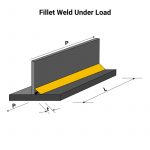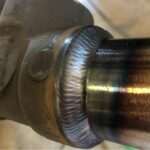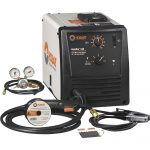Faying surfaces refer to the contacting faces of two materials, which are put together to form a joint. In this article, you will learn more about its meaning, its application in welding, and its difference vs mating surfaces.
More About Faying Surfaces
Faying surfaces can be from similar or dissimilar materials. But the most important thing is that they maintain sufficient contact to enable the performance of a function and are not prone to failure. In engineering, metals are common faying surfaces, and consequently, corrosion is a major risk to the integrity of these joints. As a result, it is necessary to minimize the gap or crevice between the surfaces by providing a tight seal. Moreover, this seal could be in the form of bolts, rivets, adhesives, soldering, or welding. Each of these methods have their pros and cons. Also, their selection depends on factors such as the function of the joint, design strength, serviceability, and cost.
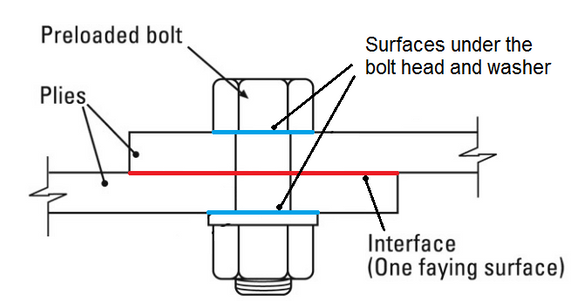
Application in Welding
In welding, faying surfaces are the metal faces on which heat is applied to form a joint. Generally, welding involves metals of the same type. However, some applications necessitate putting together different types of metals. As a result, the process becomes more complicated, so this is usually avoided in industry.
Whatever the case may be, the general requirement of faying surfaces is key to welding. This faying surface requirement is to minimize the gap between the surfaces and maintain a strong enough bond to withstand design loads. The subsequent application of filler material to eliminate crevices. Also, modifying faying surfaces to include grooves is a technique that improves seal quality and ensures complete joint penetration of the weld. In addition, fabricators use grinding and sandblasting to provide clean and even surfaces. These surface treatment techniques ensure proper lapping of the adjoining surfaces and minimize the risk of crevice corrosion.
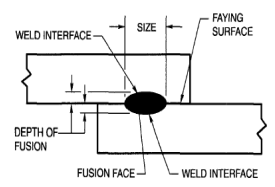
Preparation of Faying Surface for Welding
Despite the type of metals for welding, adequate preparation of the faying surface is critical to the long-term integrity of the joint. The major steps to take include:
- Develop a plan: Developing a plan, often in form of a weld map, is integral to the success of the surface preparation process. Consideration should be given to the types of welding that are available and the likely issues to be faced in relation to the state of the faying surfaces. For example, both gas metal arc welding (GMAW) and gas tungsten arc welding (GTAW) require more preparation and cleaner surfaces, but relatively less post weld cleanup. Shielded metal arc welding (SMAW) can handle some impurities of the faying surfaces but needs more interpass and post weld cleaning. Also, selection of the type of abrasive and filler metal for the procedure should be in line with what suits the base metal.
- Cut, bevel, and fit: Proper cutting, beveling, and fitting of the base metal minimizes the work requirement post weld. Avoid using overly aggressive abrasives that can undercut the faying surface, and possibly result in tolerance issues during assembling. The skill of the welder is key in this stage because any mistakes will affect the weld joint quality.
- Clean the surface: Some applications require light cleaning with acetone and wire brush to remove rust, coatings, and paint. Other applications require an abrasive product to remove the dirt. In such a scenario, start with a less coarse option and increase in aggression only when necessary.
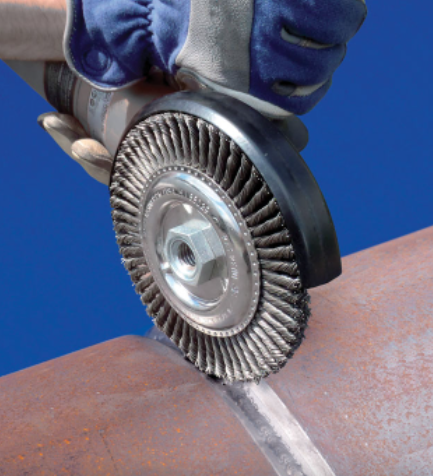
Faying Surface vs Mating Surface
Faying surfaces and mating surfaces share the similarity of being the contacting faces of two similar or dissimilar materials. However, their concepts are different as the table below highlights.
| Faying Surface | Mating Surface |
| No gap or crevice is left between them. | Possibility of gaps and crevices between the surfaces. |
| A sealant is applied at the surface to prevent air or moisture entry. | Allows the passage of air and moisture as there is no sealant applied. |
| Less susceptible to corrosion due to minimized air and moisture entry into the joint. | Constantly at risk of corrosion without the use of a sealant to protect the joint. |
| Typically, a load bearing joint as it is robust. | Not designed to bear significant loads. |
| Requires significant surface preparation. | Does not necessarily need surface preparation. |
In summary, mating surfaces are simply faying surfaces before the application of a sealing mechanism, which makes the joint robust and corrosion resistant.

